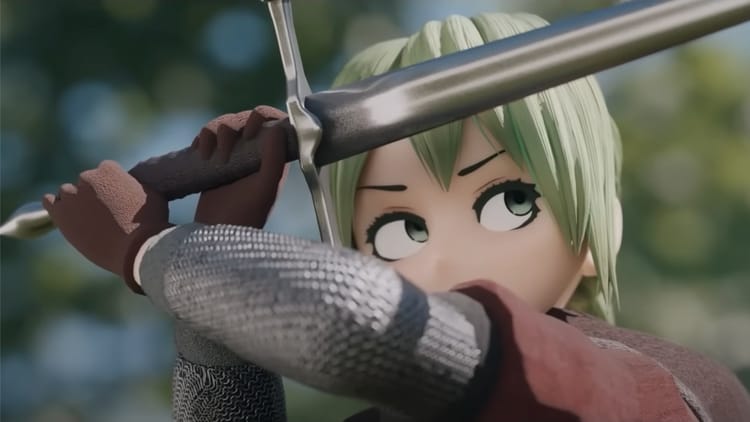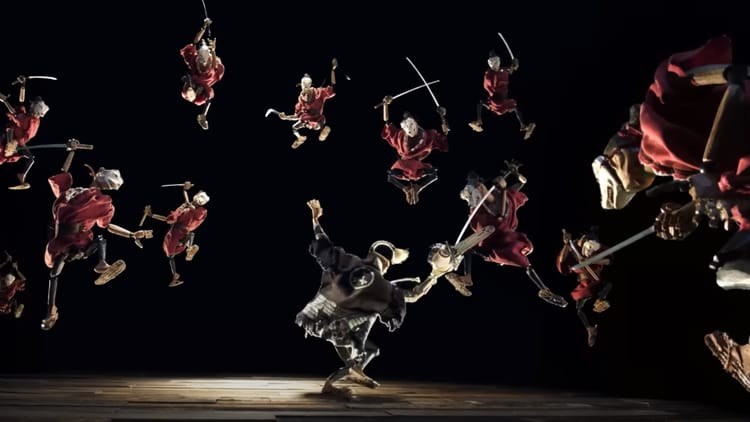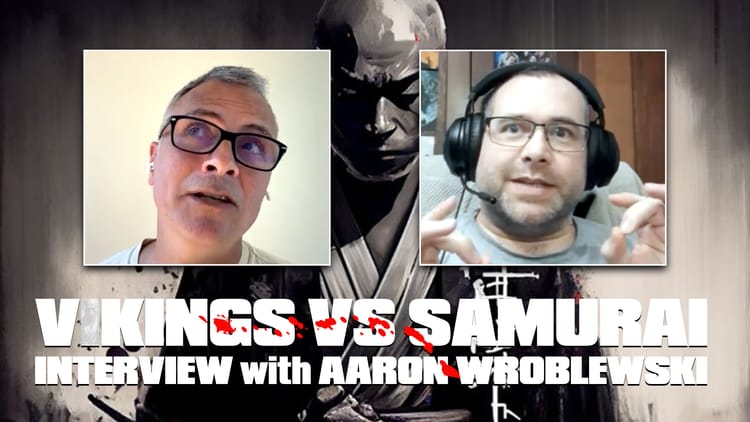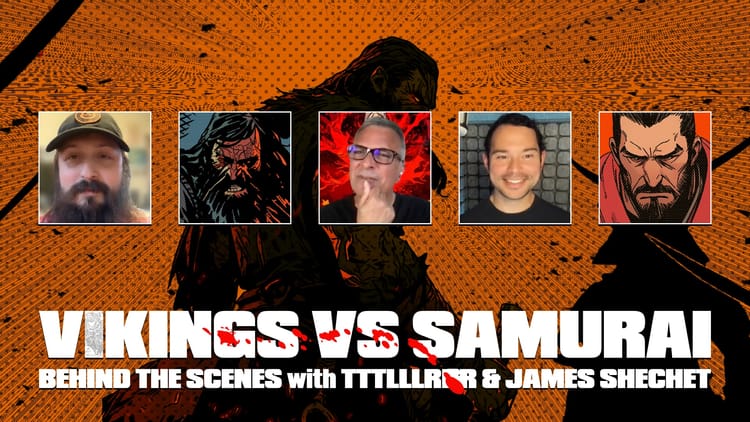Crecganford: The Parallels and Power of Samurai and Vikings
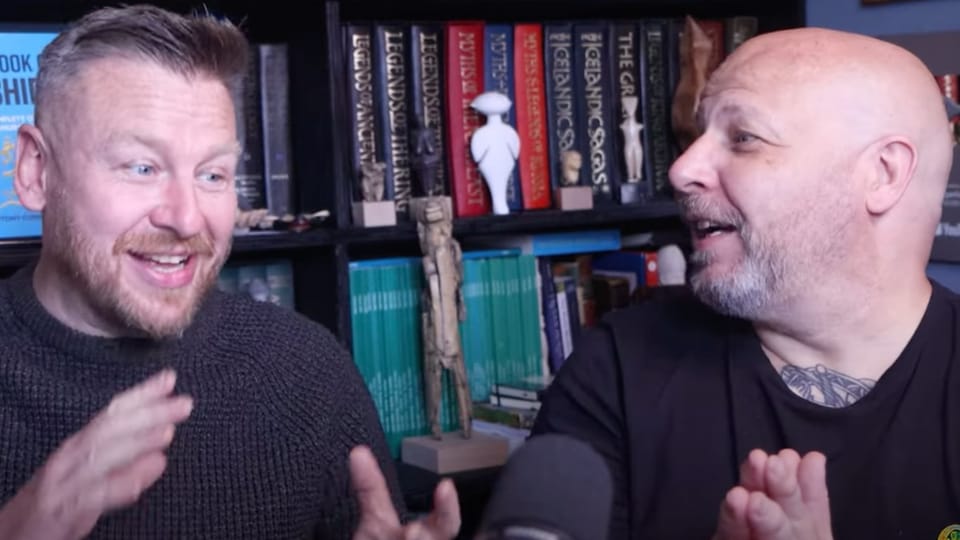
I’m neck-deep in research on VIKINGS vs SAMURAI. I mean, seriously, it’s a blast! My go-to guru? None other than Antony Cummins. His works like Samurai Arms, Armour & Tactics of Warfare and Samurai and Ninja: The Real Story Behind the Japanese Warrior Myth that Shatters the Bushido Mystique are practically my bibles. Just last month, I had the good fortune of doing a Q&A with Antony himself.
So, Antony drops by Crecganford, this killer show about ancient mythology and religious history. He and Jon White, the host, explore the worlds of samurai and Vikings, laying down some serious wisdom and showcasing Buğra Batuhan Berah’s artwork from VIKINGS vs SAMURAI. Yeah, it's as epic as it sounds.
Now, let’s get down to brass tacks. The samurai and the Vikings, despite hailing from Japan and Scandinavia, are like spiritual brothers. These warriors share an uncanny resemblance in their culture, weaponry, and warrior code. Both revered for their bravery, fearlessness, and martial expertise, they’ve got roots deeply embedded in their societies and mythologies. You gotta wonder, how do these disparate cultures end up so similar? And man, imagine if they had met — what a showdown!
The backbone of samurai and Viking success? Their societal structures. These guys weren’t just solo warriors; they had entire societies backing them up with the necessary infrastructure and resources for their campaigns. Most of these warriors were part-time soldiers, full-time farmers, hustling for enough wealth to eventually kick back from the battlefield. This agricultural tie-in massively shaped their myths and motivations.
The samurai, born from Japan’s centralized government system, morphed from court servants into a dominant warrior class by the 12th century. Their power crescendoed with the Kamakura authority and later the Tokugawa shogunate. The Sengoku period samurai, constantly at war, refined their combat style, drawing from Chinese classics and Japan’s rugged terrain.
Meanwhile, Vikings — their name initially meaning raiders — were predominantly farmers when not plundering. The Viking Age, a 300-year odyssey, saw Scandinavians venturing out for trade, settlement, and loot, driven by population pressures and advanced seafaring tech. Their shipbuilding prowess was unparalleled, enabling vast explorations and conquests.
Day-to-day life? Both samurai and Viking warriors juggled farming with fighting. Campaigns were timed around the agricultural calendar. Samurai managed farm estates, intertwining with their agrarian base. Vikings, too, centered life around the farm, with seasonal events dictating their raiding schedule.
In combat, both wielded a variety of weapons — spears and bows taking precedence. The samurai’s katana and the Viking’s axe are legendary, but practicality dictated their choice of arms. Honor and loyalty were paramount, defining their warrior ethos and fearsome reputations.
Their mythologies and religious beliefs sculpted their warrior codes. Samurai beliefs were a blend of Buddhism, Confucianism, and Shinto, while Viking mythology brimmed with gods, giants, and mythical creatures. This spiritual tapestry influenced their rituals and warfare.
In a hypothetical clash? Samurai’s organized military tactics might edge out in open warfare, but a Viking, with their raw physicality and combat style, could dominate one-on-one.
The legacies of samurai and Vikings? Endlessly captivating. Their tales and cultural impacts continue to enthrall, from literature to media. Their storied pasts offer a riveting glimpse into the world of these legendary warriors, keeping their mystique alive and kicking.

